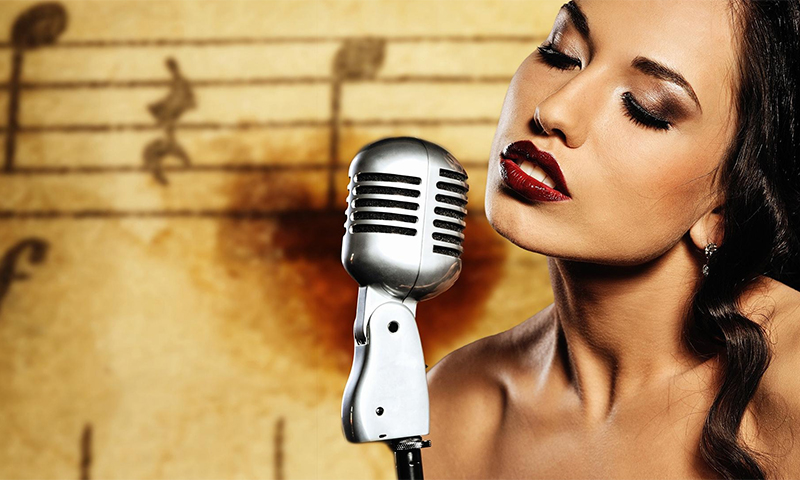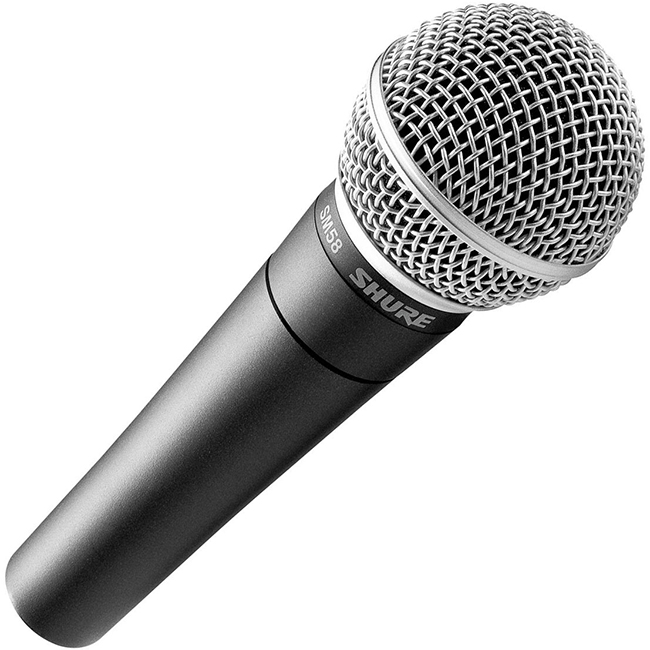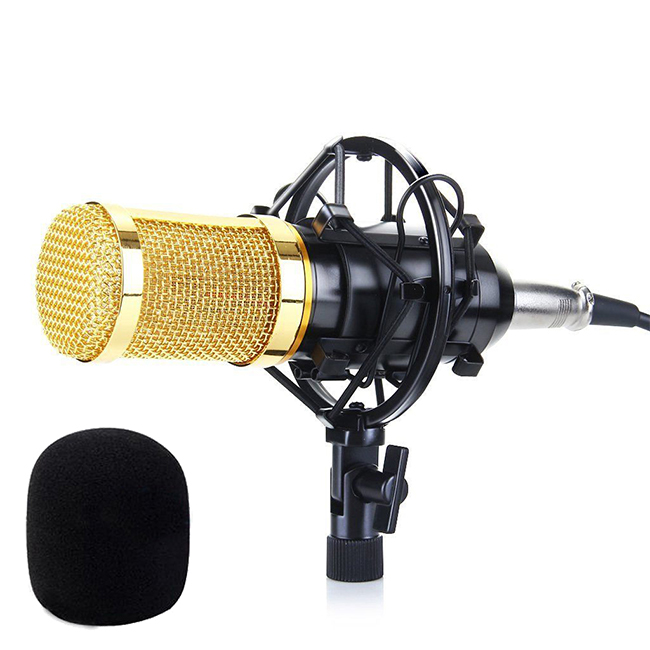Bad microphones do not happen - there are wrongly chosen and not so installed. Acoustic technology is generally quite capricious, but if you study the principle of its operation and understand the interrelations of the main parameters, you can find an excellent microphone for any tasks. Here the rule “the more expensive the better” does not work - you only need to rely on your own hearing and technical characteristics.

Content:
The best microphone manufacturers - which company to choose
The cost of a microphone is influenced both by its filling and the fame of the manufacturer. However, serious companies do not just charge for the brand - they themselves invest a lot in the development of new technologies. As a result, more and more advanced microphones appear on the market for solving various tasks.
The best acoustic equipment produced by the company:
- Sennheiser;
- Rode;
- Neumann;
- AKG;
- Shure.
With the most outstanding models from these manufacturers, you can meet in our ranking. But in order to make the right choice of a microphone, you will first have to decide on its appearance and main characteristics.
The principle of operation and the device microphone

Whatever the type of microphone, there are 2 main systems:
1. Acoustic - is a sensitive membrane, which begins to oscillate with a certain frequency under the pressure of sound waves.
2. Electromechanical - converts the movement of the diaphragm into electrical signals. They can already be “broadcast” to any receivers (combo amplifier, speakers, computer).
It is the differences in the design of the acoustic and electromechanical subsystems that make it possible to divide all existing microphones into separate types.
Types of microphones
Dynamic

Dynamic microphones are a speaker that works the other way around. Here the oscillations of the membrane are transmitted to a coil rigidly attached to it, which is located in a force field created by a permanent magnet and in it generates an electrical signal.
Such a scheme supports a fairly wide range of frequencies, although it is not perfect with the upper ones. In addition, it is rather “sluggish” and does not have time to react to a quick change of sounds due to the cumbersome acoustic unit.
Dynamic microphones are very reliable and with honor they withstand even falls from a small height. They are ideal for performances at concerts, in theaters, in open areas.
Pros:
- Suitable for both professionals and home use;
- Elegant study of low and medium frequencies;
- Well catch sounds at a distance of 1.5 m;
- They have medium sensitivity and do not collect extraneous noises;
- Reliable and can work in all weather conditions.
Minuses:
- Poor transmit HF, making the sound at the top sluggish and inexpressive;
- Do not have time to respond to quick "attacks."
A separate kind of dynamic microphones are tape. They provide better detail of sounds, but they are more expensive and do not tolerate a careless attitude. Their filling is more delicate - the acoustic part is represented by a very thin metal plate (actually a strip of foil), which can break under excessive pressure.
Such microphones perfectly capture the sound of vocals, strings and brass instruments. They make their sound soft and velvety, smoothing out shrill treble.
Capacitor (electrostatic)

The principle of operation of such microphones is based on a change in the capacitance of the capacitor installed inside due to vibrations of the acoustic membrane.Conder transmits to the network the alternating current of the same frequency, forming an electrical output signal.
Condenser microphones perceive the widest frequency range from 5–30 Hz to 24–200 kHz (depending on the model’s tricky appearance), which makes them indispensable in recording studios, where the equipment must pick up the slightest nuances of sound.
Pros:
- Maximum operating frequency range;
- High sensitivity (sometimes even excessive);
- Ability to change the focus;
- Give a "warm" and lively sound;
- Can be produced in any size - even the smallest.
Minuses:
- Cost more dynamic;
- They require careful handling and are “afraid” of high sound pressure;
- Always tied to a power source.
A special case of capacitors are electret microphones. To work, they no longer need external power, since the voltage provides a layer of charged electret on the surface of the membrane.
Alas, as its charge is consumed, the sound quality will gradually deteriorate. And the diaphragm itself, burdened with such ballast, loses a little in sensitivity.
Microphone selection options

Sensitivity
High sensitivity allows the microphone to pick up even barely audible distant sounds. Whether this is good or bad depends on the conditions in which he is to work.
In relatively quiet rooms with good sound insulation, high sensitivity is fully justified, as the equipment can accurately capture all the nuances of music or voice. Here condenser and electret microphones will show themselves best.
If you need a device for use in noisy and crowded places, it is better that its sensitivity was lower - in this case, the recording will be clean enough. With the task perfectly cope dynamic microphones.
Also, high sensitivity is needed in devices remote from the sound source (even if the distance to it is only a couple of meters). Models that are located directly in front of a person speaking or a musical instrument should have less sensitivity.
The characteristics of different types of microphones will help you choose the right equipment for a particular case:
1. Dynamic "shake" the most difficult - their sensitivity is 0.3-4 mV / Pa.
2. Very similar characteristics for tape microphones - from 1 to 3 mV / Pa.
3. Condenser work in the range of 1-18 mV / Pa.
4. In electret threshold sensitivity is higher - from 6 to the same 18 mV / Pa. It turns out that of all the microphones they have the thinnest “ear”.
Sound Pressure Level (SPL)
A parameter that indicates how powerful a sound can perceive a microphone without the appearance of distortion and the risk of diaphragm rupture.
1. A microphone with an average pressure of up to 100 dB is enough for working in a studio (professional or home);
2. For rock concerts, recordings of drummers and electric guitars, it is better to take a “stronger” model that can withstand 130 dB and higher.
Here it must be remembered that the higher the ultrasound, the lower the sensitivity of the microphone - these two characteristics are inversely dependent.
If you want to get a powerful and at the same time detailed sound, you should look for a model with a built-in attenuator, which will increase the SPL of your equipment and protect it from overload.
frequency range
Shows the minimum and maximum frequency of sounds that the microphone is able to catch. However, this does not mean that you need to look for equipment with the widest range - in most cases, its purchase will be unnecessarily expensive.
Here it is better to focus on the sound sources themselves, with which you have to work:
1. Human speech falls in the frequency range from 100 to 6000 Hz, although 3-4 kHz is enough for its normal perception.
2. Singing covers the frequency scale from 75 to 10,000 Hz. These characteristics are considered normal for "vocal" microphones, but they are enough for some instruments: violins, electric guitars, flutes, viola.
3. To qualitatively remove the sound from an acoustic guitar, pipe, oboe, you need an extended frequency range - up to 12-15 kHz. For synthesizers, the ceiling is even higher and approaches the ultrasound value of 20 kHz.
4. For bass instruments (drummers, bass guitar, tuba, piano, saxophone, organ, double bass), the threshold should be reduced to 20-50 Hz.
Keep in mind that when approaching the 20 kHz mark, sounds are already becoming difficult to distinguish with the human ear. Therefore, microphones that have overcome this threshold are referred to as special equipment.
Focus of action
We are talking about the ability of the microphone to pick up sounds coming from one or several sides.
According to this parameter, the technique is divided into two large families:
1. Omnidirectional microphones are capable of receiving sounds from any point with approximately the same sensitivity, that is, they have a working angle of 360 ° (circular orientation). Such devices are used most often at concerts, where, in addition to the performer’s voice, you must simultaneously take a musical picture from the stage. But in the premises they work worse because of the closed acoustics.
2. Unidirectional - take the sound from a certain side, eliminating extraneous noise. They are excellent for working in studios and simultaneous recording of several instruments, if you put one device in front of each.
Depending on the direction of perceived sounds, the second group of microphones is also commonly divided into types:
1. Models with a cardioid pattern are devices with a “perception” angle of about 130 °, insensitive to sounds coming from the back.
2. Eights - have two equivalent sensitivity zones (front and rear) with angles of about 150 ° and cut off only side sounds. The ideal area for using such microphones is an interview, when the interlocutors sit opposite each other.
3. Supercardioid - the same eights, only with unequal loops of capture. The front angle of the zone of sensitivity in them reaches 100 °, the rear does not exceed 10 °. Side plots are still "deaf".
4. Hypercardioid - another version of bidirectional microphones with a ratio of reception areas of 75/25 degrees. The petals of the diagrams are very narrow, due to which the maximum isolation of the membrane from extraneous noise is achieved.
Which microphone to choose

1. If you need a microphone exclusively for voice transmission, an inexpensive version of a cardioid tape device will do. Ultrasound does not play a special role, since it is unlikely that you can load it more than 80 dB. The wide frequency range is also not needed here - enough 100-6000 Hz.
2. Are you the owner of a loud voice or are you planning to work with a microphone on the street and take an interview? Take a less sensitive tape or dynamic model, designed for sound pressure of 100 dB with a cardioid "eight".
3. For open-air concerts, dynamic microphones are also suitable. Only they have to withstand ultrasound of about 130 dB, especially if powerful instruments are being played on the stage. Moreover, the frequency range should correspond to the sounds being shot. Do not miss the choice can only be the case if you take a model with a good frequency range (at least 50-15000 Hz). Ideal if they are unidirectional microphones with a simple cardioid.
4. In a well-insulated studio, a capacitor unit with the ability to switch directivity will show itself best. High sensitivity will provide the design of the microphone itself, the frequency range can be selected from 20-80 Hz to 15-20 kHz.
5. Fans for equipping a home recording studio can take an electret model - it will be cheaper than a capacitor, but it will allow you to get the same high quality sound. The main thing is that the microphone has universal frequency response: the pressure level is 100-130 dB and the frequency range is 80-15000 Hz.
How much is a microphone

1. A dynamic microphone will cost you in the amount of 150 rubles for a simple karaoke model to 100-120 thousand for a professional vocal apparatus.
2. Ribbon is much more expensive - from 6000-7000 to 450-460 thousand rubles.
3. Condenser models start from 600 rubles and reach 500-700 thousand (that’s how much good professional studio students cost).
4. Electret can be purchased at a price of 400-700 rubles. up to 50-70 thousand.
It will be interesting to friends too









